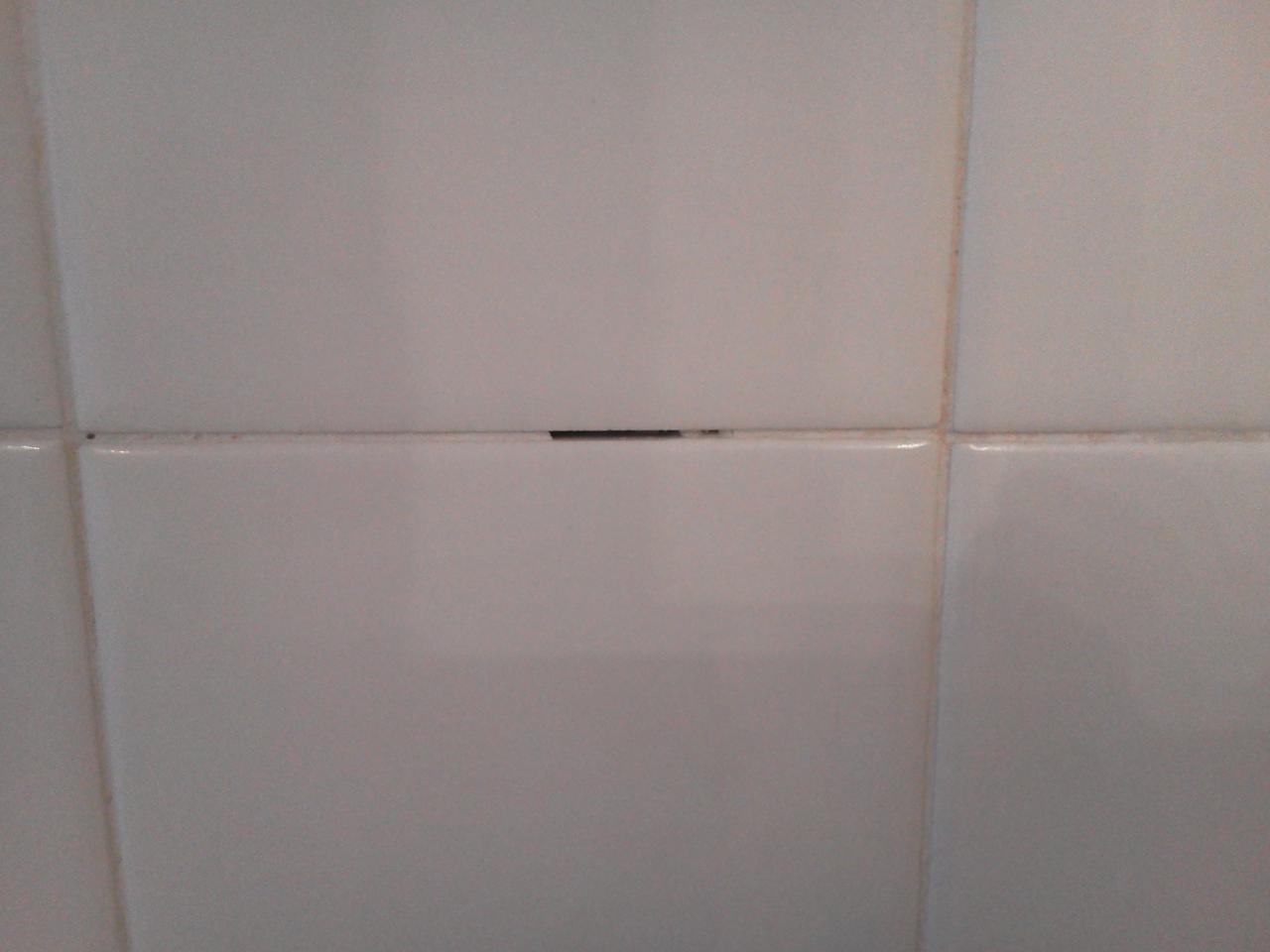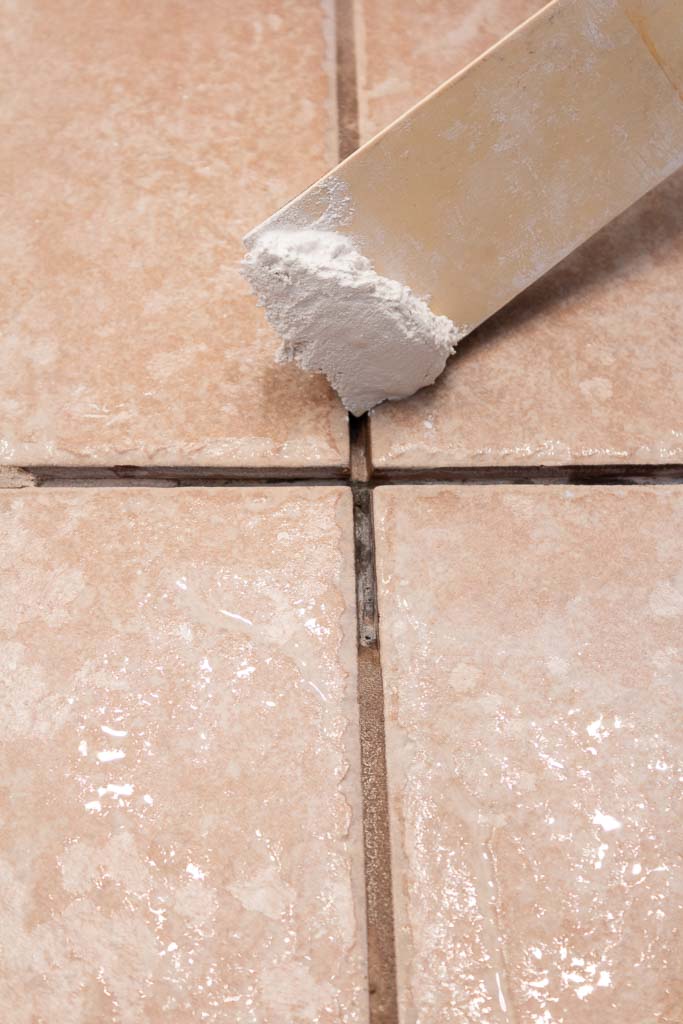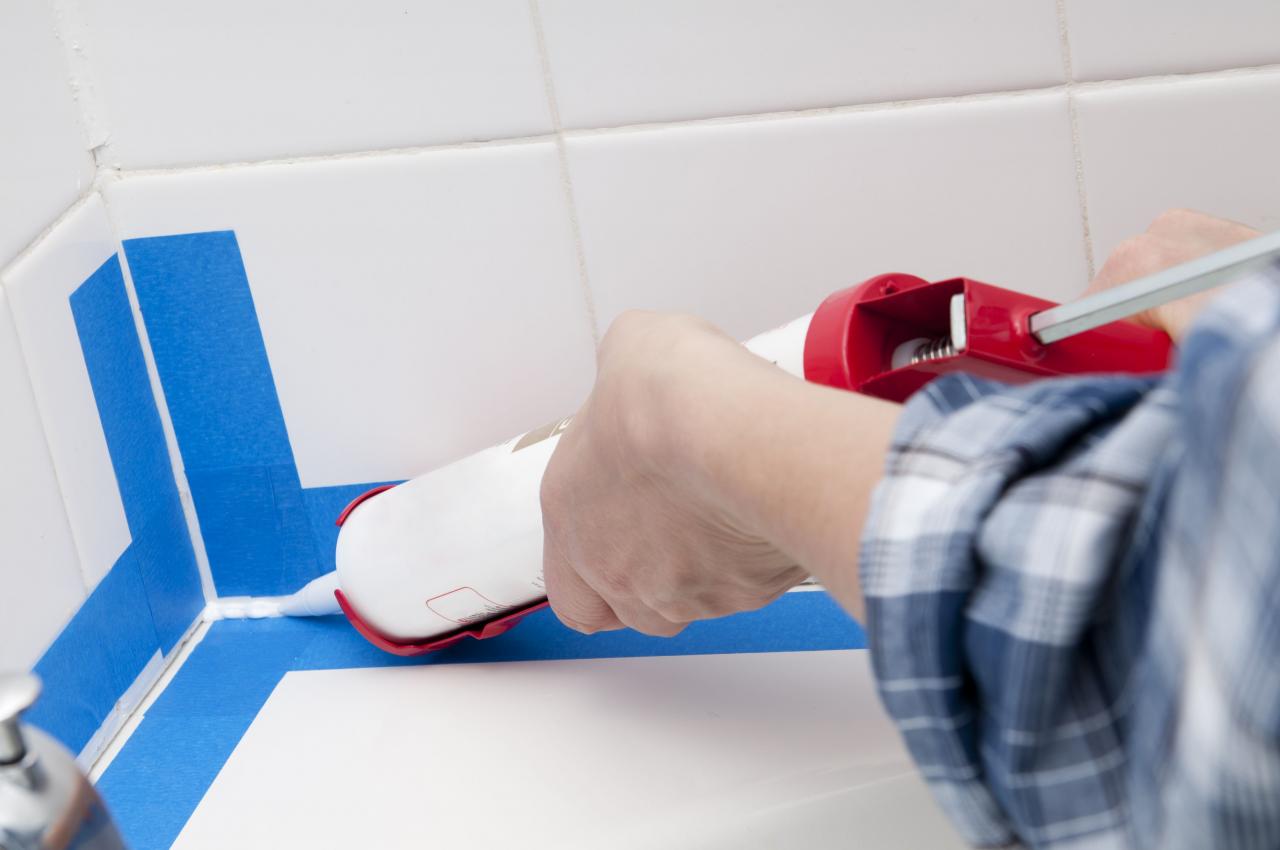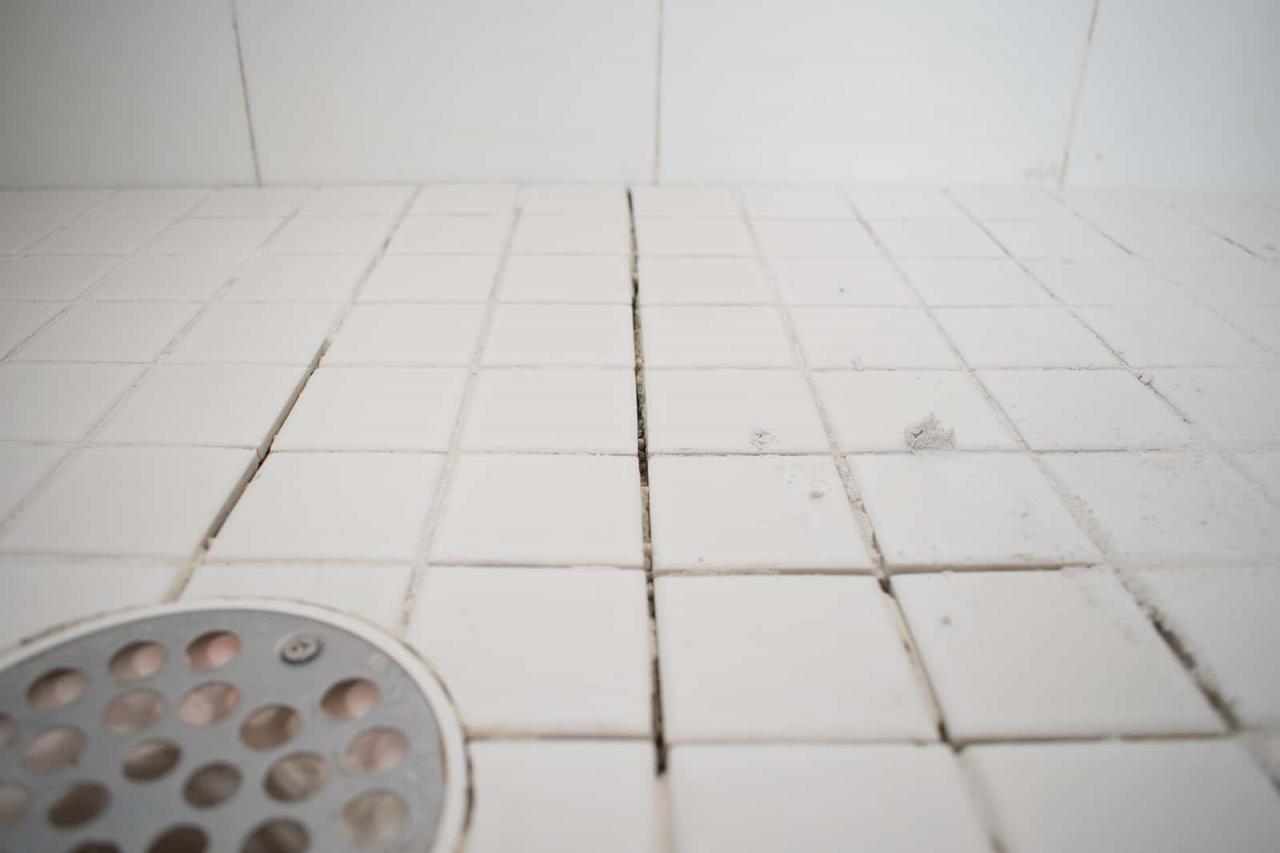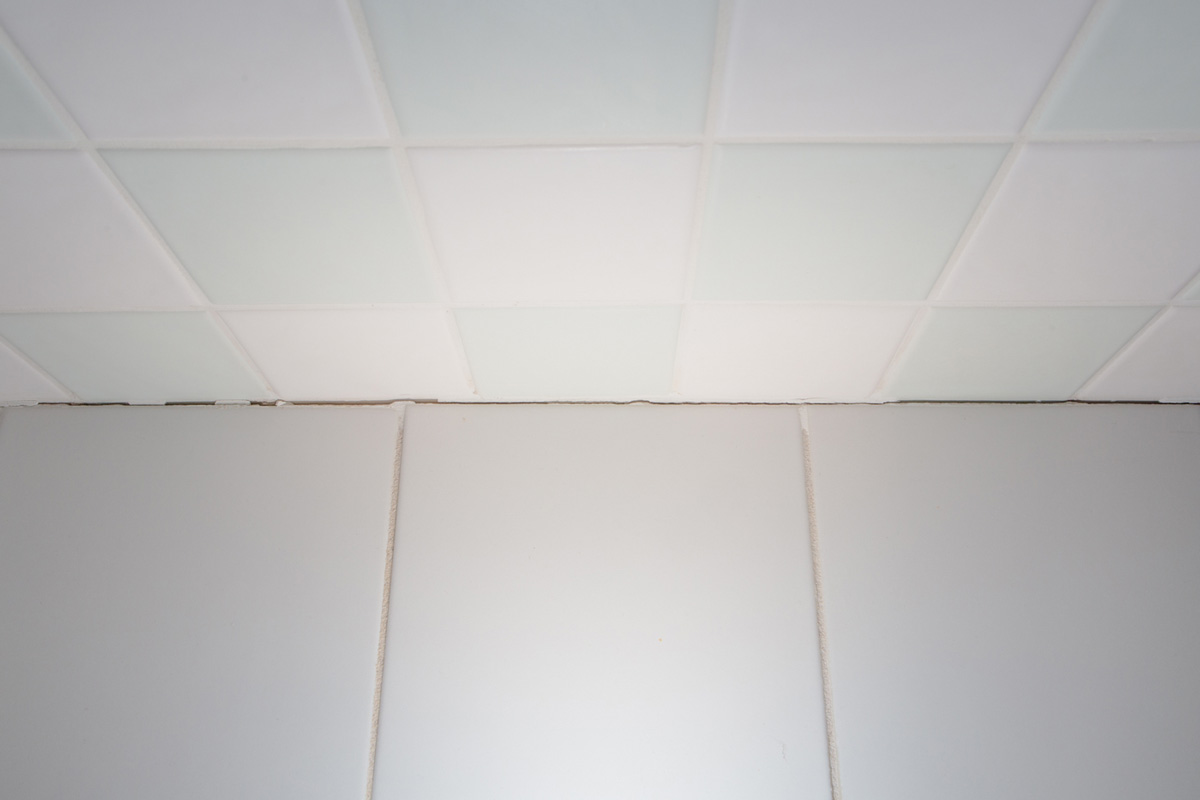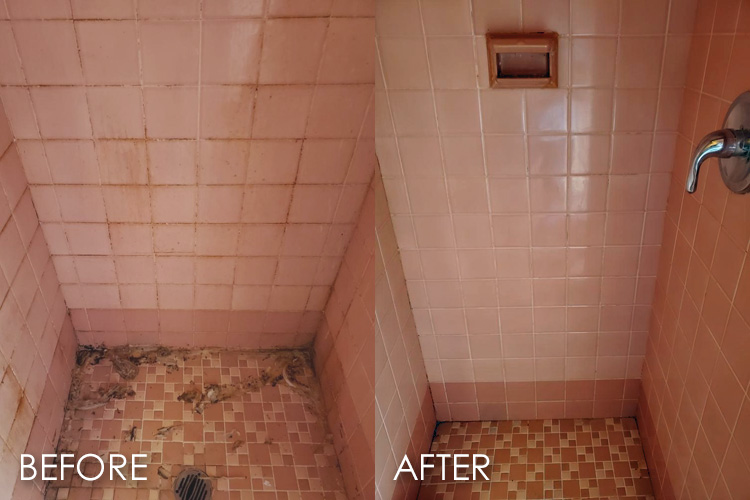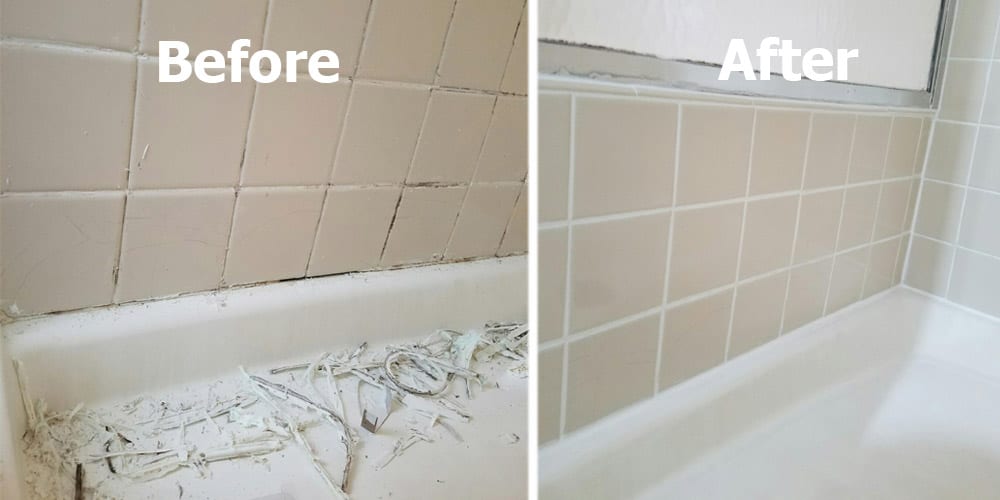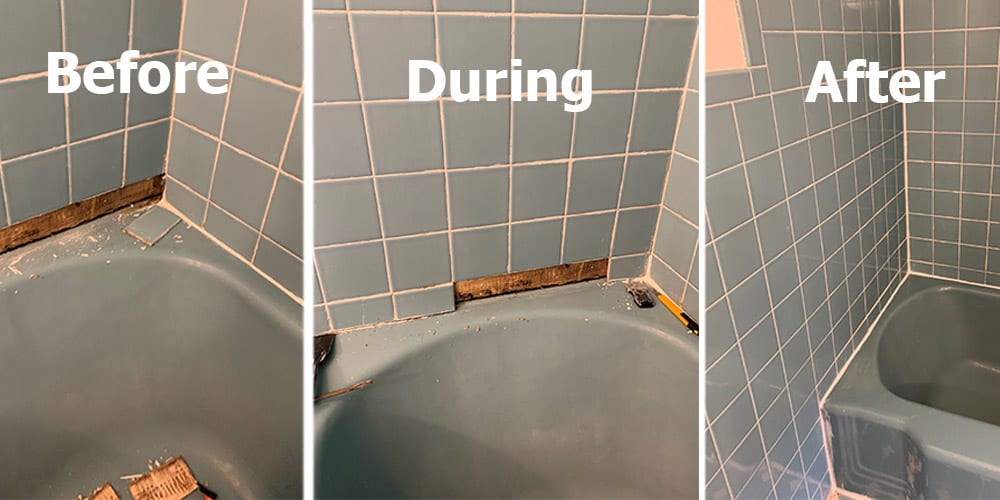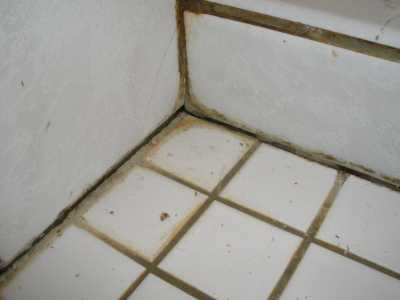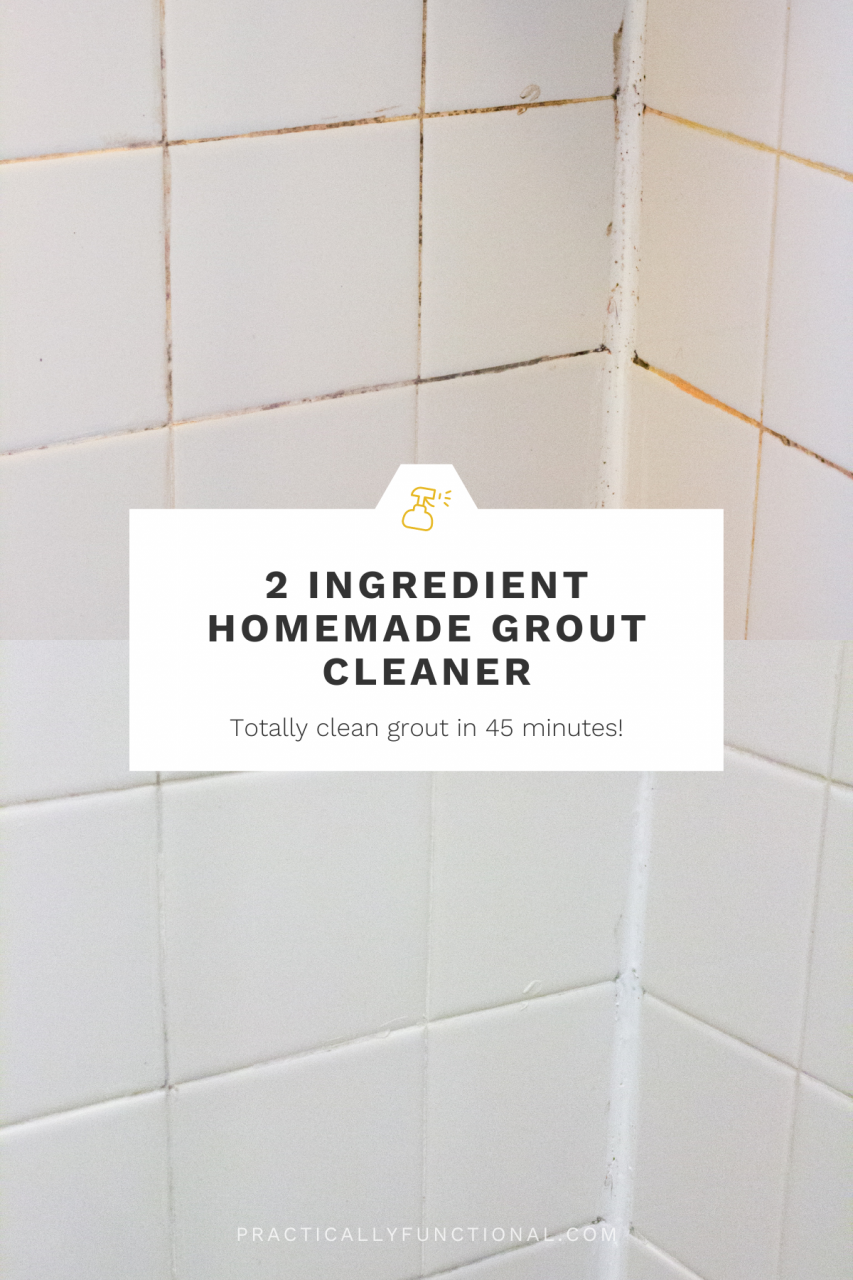Common Problems with Bathroom Tile Grout
There are many issues that can compromise the integrity and aesthetics of grout, turning what should be a straightforward task into a perplexing puzzle of cleaning, repairing, and prevention. Below are the common problems with bathroom tile grout.
- Cracked or Missing Grout: One of the most common issues with bathroom tile grout is cracking or missing sections. Over time, grout can deteriorate due to moisture, movement, or improper installation. Cracked or missing grout not only looks unsightly but also allows water to seep into the gaps, potentially causing damage to the tiles or underlying structure.
- Discolored Grout: Grout can become discolored over time, especially in areas that are exposed to moisture and dirt. Mold and mildew growth, soap scum, and mineral deposits are common culprits behind discolored grout. This can make the entire bathroom look dirty and unhygienic.
- Stained Grout: Similar to discoloration, grout can also become stained. This can happen due to spills, improper cleaning methods, or the use of harsh cleaning products. Stained grout can be particularly challenging to clean and may require specialized cleaning solutions or techniques.
- Crumbling or Deteriorating Grout: In some cases, grout may start to crumble or deteriorate, especially if it was not applied correctly or if low-quality grout was used. This can lead to gaps between the tiles, making them loose and prone to further damage. Crumbling grout can also be a sign of underlying issues such as water damage or movement in the foundation.
- Inconsistent Grout Color: In situations where grout has been repaired or patched, it is common for the color to be slightly different from the original grout. This inconsistency in color can be noticeable and detract from the overall appearance of the bathroom.
- Difficulties Cleaning Grout: Cleaning grout can be a labor-intensive task, especially if it has not been properly maintained. Grout lines can be narrow and hard to reach, making it challenging to remove dirt, grime, and stains. Regular cleaning and sealing can help prevent these issues, but neglecting proper maintenance can result in stubborn grout stains that are difficult to remove.
- Waterproofing Issues: Grout plays a crucial role in ensuring the bathroom remains waterproof. If the grout is damaged, cracked, or improperly sealed, water can seep through and cause damage to the tiles, walls, and subfloor. This can lead to expensive repairs and potentially hazardous mold growth.
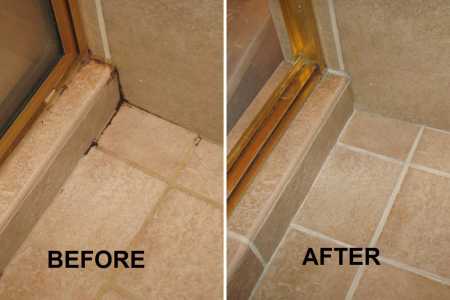
Step-by-Step Guide to Fixing Grout in Bathroom Tile
Step 1: Assess the damage
Before you begin fixing the grout in your bathroom tile, take some time to assess the damage. Look for any cracks, gaps, or missing grout in between the tiles. Determine the extent of the damage and note any areas that require attention.
Step 2: Gather materials
To fix the grout in your bathroom tile, you will need a few materials. These include grout powder or premixed grout, a grout float, a grout sponge, a bucket of water, a small brush or toothbrush, and a grout sealer. Ensure you have all these materials before proceeding to the next step.
Step 3: Remove damaged grout
Use a grout saw or a grout removal tool to carefully remove the damaged grout from between the tiles. Be gentle to avoid damaging the tiles themselves. Take your time to remove all the damaged grout, creating a clean and even space for the new grout.
Step 4: Prepare the new grout
If you are using grout powder, follow the instructions provided to mix it with water to create a smooth and consistent paste. If you are using premixed grout, you can skip this step. Ensure that the grout is mixed to the right consistency, not too thick or too runny.
Step 5: Apply the new grout
Using a grout float, spread the new grout over the gaps between the tiles. Hold the float at a 45-degree angle and push the grout into the spaces, making sure it fills them completely. Work in small sections at a time to ensure the grout doesn’t dry before you can finish.
Step 6: Clean the tiles
Once you have applied the new grout, use a damp grout sponge to wipe away any excess grout from the tile surfaces. Be careful not to remove too much grout from the spaces between the tiles. Rinse the sponge frequently in a bucket of clean water to avoid spreading grout residue.
Step 7: Seal the grout
After allowing the grout to dry for the recommended time (usually 24-48 hours), apply a grout sealer to protect it from stains, water damage, and discoloration. Follow the instructions on the sealer packaging for the best results. Allow the sealer to dry completely before using the bathroom again.
Tips for Maintaining and Preventing Grout Issues in Bathroom Tile
Clean Regularly: Regular cleaning is essential to maintain the grout in bathroom tiles. Use a mild cleaner and a soft brush or sponge to remove dirt, grime, and soap residue from the grout lines. Avoid using harsh chemicals or abrasive cleaners, as they can damage the grout.
Seal the Grout: Applying a grout sealer is an effective way to prevent grout issues in bathroom tiles. The sealer creates a protective barrier that prevents water, dirt, and stains from penetrating the grout. It is recommended to seal the grout lines every 6 to 12 months, or as specified by the manufacturer.
Prevent Moisture Buildup: Moisture is one of the main culprits behind grout issues in bathroom tiles. To prevent moisture buildup, ensure proper ventilation in the bathroom by using exhaust fans or opening windows during and after showers. Wipe down wet surfaces, such as shower walls and floors, to remove excess moisture.
Repair Cracks and Chips: Cracked or chipped grout can lead to further damage if left unattended. Promptly repair any cracks or chips in the grout to prevent water from seeping into the tile substrate. Use a grout repair kit or consult a professional for larger or more extensive repairs.
Avoid Harsh Cleaning Tools: When cleaning bathroom tiles, avoid using abrasive tools such as steel wool or scrub brushes with stiff bristles. These tools can scratch or damage the grout, making it more susceptible to issues. Instead, opt for softer brushes or sponges that are gentler on the grout.
Use Grout-Friendly Products: Some cleaning products can be too harsh for grout and may cause it to deteriorate over time. Choose cleaning products specifically formulated for use on grout and avoid acidic or bleach-based cleaners. These can weaken the grout and cause discoloration.
Regularly Inspect the Grout: Regularly inspect the grout lines for any signs of damage, such as cracks, chips, or discoloration. Early detection can prevent further issues and allow for timely repairs. Addressing any grout issues promptly can help maintain the integrity of the bathroom tile.
How To Fix Cracked Grout in Tile Floor – Tile Grout Repair Tips
Quick Fix: Repair Cracked Bathroom Grout
Quick Fix: Repair Cracked Bathroom Grout
How to Fix Cracked Grout – At Charlotteu0027s House
How To Repair Bathroom Grout Step-by-Step DIY Guide
Is cracked grout a problem? – Is grout repair easy? – The Grout Medic
Can I put new grout over my old grout? The Grout Medic
Tile Water Damage Repair Central New Jersey – The Grout Medic
Prevent Expensive Bathroom Repairs ProMaster (513) 724-0539
Related Posts:
- Painting Plastic Bathroom Tile
- Easy Bathroom Tile Designs
- Vintage Yellow Bathroom Tile
- Bathroom Tile Pictures Designs
- Grey Bathroom Tile Stickers
- Overstock Bathroom Tile
- Bathroom Tile Ideas For Shower Walls
- Black And White Octagon Bathroom Tile
- Bathroom Tiles Ceramic Or Porcelain
- Antique Bathroom Tiles For Sale
